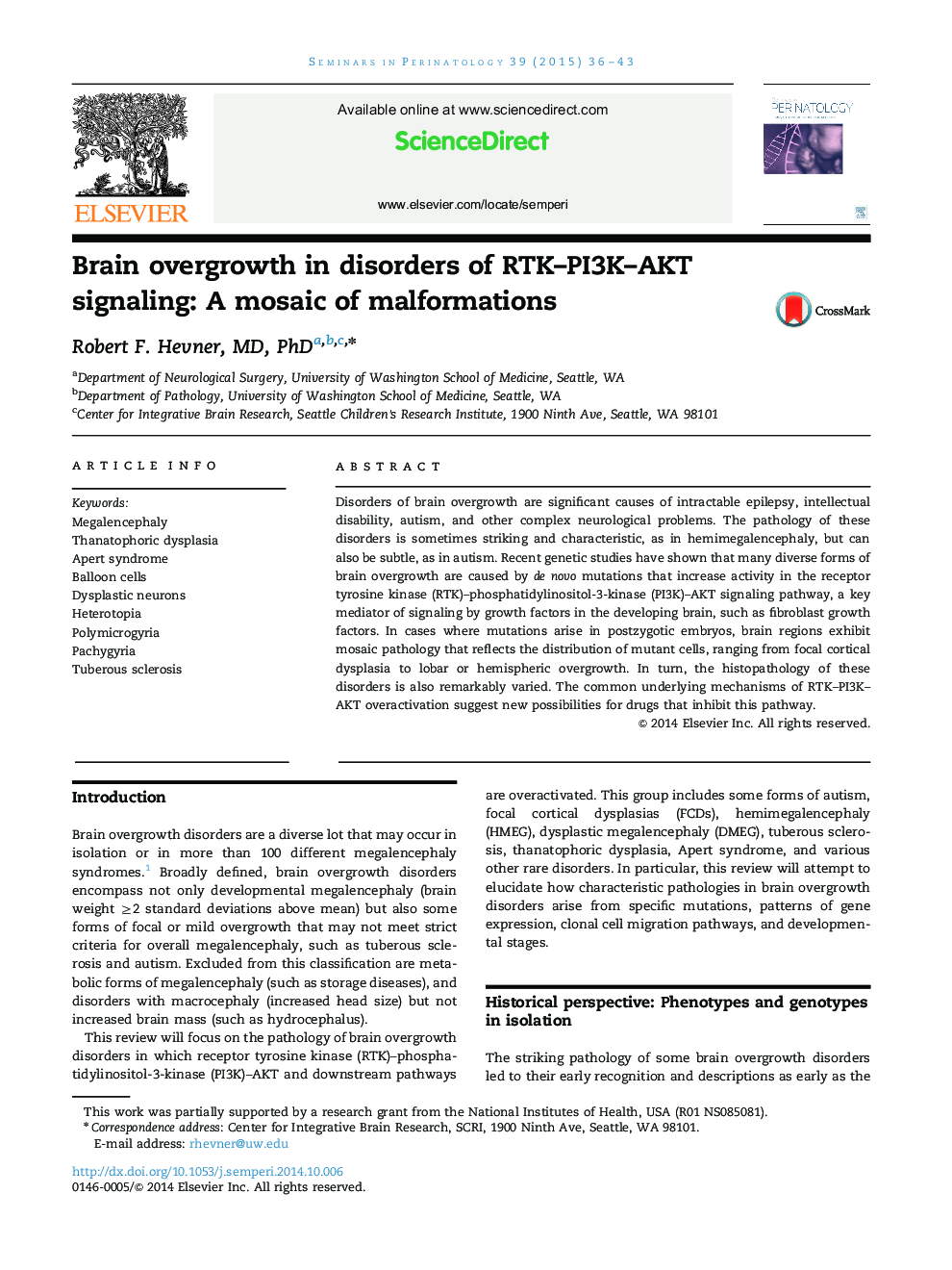| کد مقاله | کد نشریه | سال انتشار | مقاله انگلیسی | نسخه تمام متن |
|---|---|---|---|---|
| 3836322 | 1247532 | 2015 | 8 صفحه PDF | دانلود رایگان |

Disorders of brain overgrowth are significant causes of intractable epilepsy, intellectual disability, autism, and other complex neurological problems. The pathology of these disorders is sometimes striking and characteristic, as in hemimegalencephaly, but can also be subtle, as in autism. Recent genetic studies have shown that many diverse forms of brain overgrowth are caused by de novo mutations that increase activity in the receptor tyrosine kinase (RTK)–phosphatidylinositol-3-kinase (PI3K)–AKT signaling pathway, a key mediator of signaling by growth factors in the developing brain, such as fibroblast growth factors. In cases where mutations arise in postzygotic embryos, brain regions exhibit mosaic pathology that reflects the distribution of mutant cells, ranging from focal cortical dysplasia to lobar or hemispheric overgrowth. In turn, the histopathology of these disorders is also remarkably varied. The common underlying mechanisms of RTK–PI3K–AKT overactivation suggest new possibilities for drugs that inhibit this pathway.
Journal: Seminars in Perinatology - Volume 39, Issue 1, February 2015, Pages 36–43